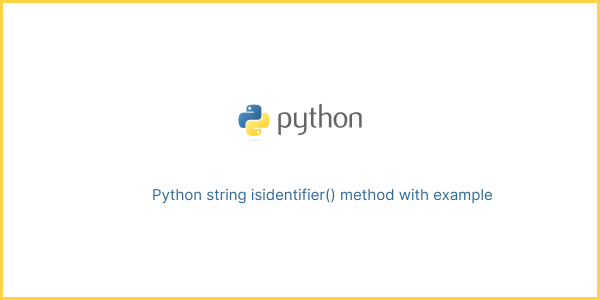The isidentifier() method in Python is a built-in function for string handling. It checks whether the string is a valid identifier or not. An identifier in Python is a name used to identify a variable, function, class, module, or other object. There are certain rules in Python for writing an identifier.
1. Identifiers can be a combination of lowercase (a to z) or uppercase (A to Z) letters, digits (0 to 9), or an underscore (_).
2. An identifier cannot start with a digit.
3. Keywords cannot be used as identifiers.
Syntax:
string.isidentifier()How to use the isidentifier() method:
str1 = "test_variable"
str2 = "2nd_variable"
str3 = "varWithNumber1"
str4 = "while"
print(str1.isidentifier()) # Output: True
print(str2.isidentifier()) # Output: False
print(str3.isidentifier()) # Output: True
print(str4.isidentifier()) # Output: True but it is a keyword, so should be avoidedExample 1
Checking Valid Identifiers.
valid_identifier = "myVariable"
invalid_identifier = "9myVariable"
print(valid_identifier.isidentifier()) # Output: True
print(invalid_identifier.isidentifier()) # Output: FalseExample 2
Checking Empty Strings and Special Characters.
empty_string = ""
special_char = "@var"
print(empty_string.isidentifier()) # Output: False
print(special_char.isidentifier()) # Output: False
